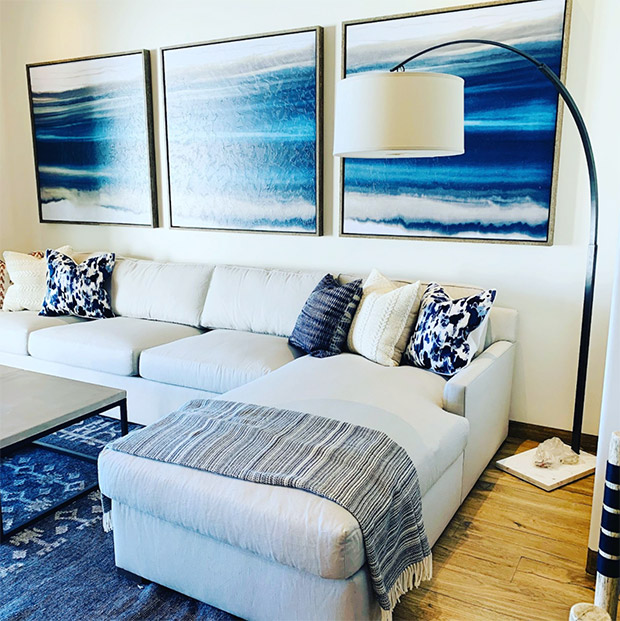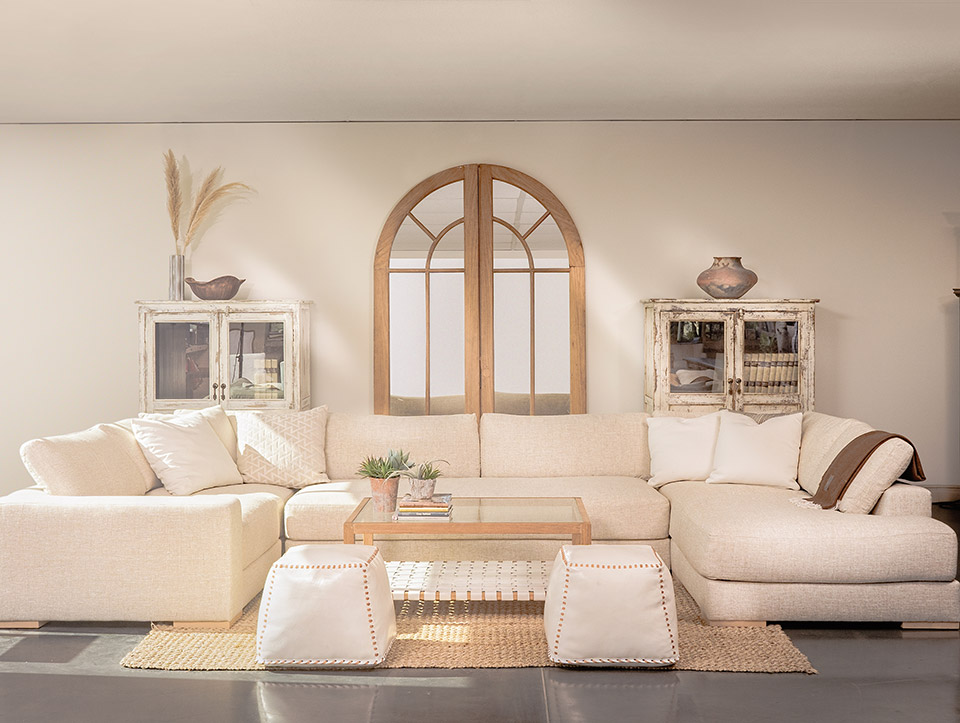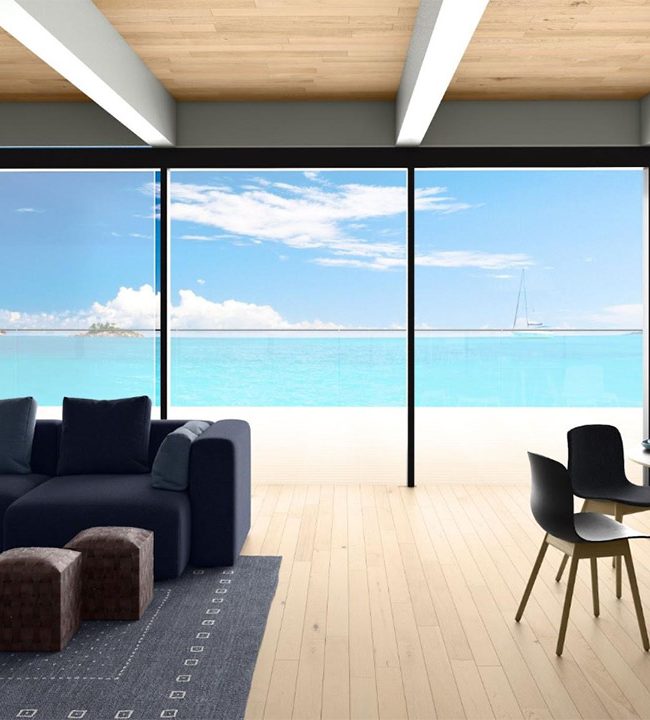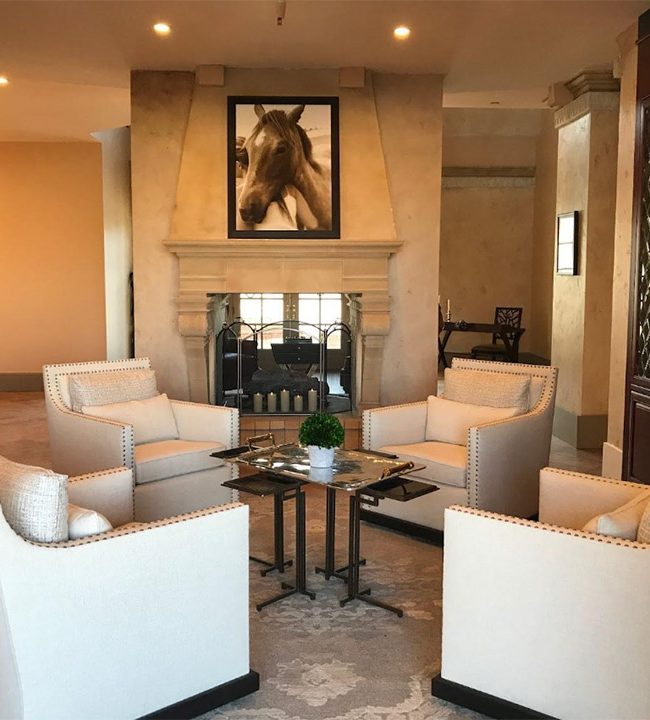In our previous post, we touched on how the frame construction of upholstered items can play an important role when it comes to their quality. By understanding the construction process and the materials used, we’re able to distinguish a high-end sofa or chair from one that might not be worth your investment.
However, it doesn’t stop there, we also need to discern what goes into the seat or inner back of these upholstered items. More often than not, buyers might pat a seat cushion, check its firmness, and base their purchase on this simple observation.
The reality is that choosing high-quality sofas and chairs can be trickier than we think. For one thing, what buyers might consider as beautiful aren’t really constructed well. While we understand that more expensive items tend to be better-constructed, it pays to know what exactly you’re investing in when it comes to seat cushions. After all, we’re going to be sitting on this sofa or chair every day, so it’s only reasonable to expect that they last as long as they should.
That said, here are the main differences between high-end and low-end cushion insert components:
Materials Used for Core
The core is what a seat cushion is primarily made of. These components can include three types:
Foam
Foam is the most common material used for the core. These are made from different components that have varying grades and firmness. Some examples of foam include:
- Soy-Based Foam: This is made from soy and other derivatives, which are considered eco-friendly materials.
- Memory Foam: This type of foam conforms to your body shape when it is activated by heat.
- High-Density Foam: A density rating of 1.8 lb is the most common for high-density foams. Those on the higher end of the spectrum may have a 2.4 lb density.
Feathers/Down
Cushions made purely of down or feathers are less common today, but they were popular from the 18th to the early 20th century. Their high cost is one factor that has made 100% feather/down cushions difficult to find these days. Because this type of cushion doesn’t bounce back or has no resilience, they need to be constantly fluffed up after sitting.
Types can include goose/ duck belly or goose/ duck feathers. Often, these are proportionately mixed with micro-denier fibers, creating poly-cloud fill. Those with allergies or wanting animal free cushions request all micro denier fill.
Spring
Cushions with springs can either be used in combination with down/feathers or foam. In this type of cushion, there are rows of springs encased in either foam or a layer of down/feathers.
Spring cushions are considered the highest quality because they hold their shape and provide the utmost support. By using springs, these sofas and chairs don’t need to use as much foam, ensuring their longevity compared to all-foam cushions. Similarly, a spring-down cushion doesn’t need to be fluffed up, unlike those made purely from down/feathers.
Because lower-end sofas and chairs are manufactured in large quantities, their core tends to be made mostly of synthetic materials like Dacron. Also, they likely do not have feathers/down, springs, or micro-denier envelopes.
Safety
Safety is also a factor that differentiates high-end sofas and chairs from low-end ones. Since foams are typically made of chemical-based materials and a combination of other components, most states have agencies that regulate these materials and flammability. Compared to other states, California has the most stringent regulations that protect the consumer’s safety. Agencies like these ensure that the manufacturing process addresses the potentially harmful side effects that can result from the materials used in making foam.
It goes without saying that high-end sofas and chairs will be fully compliant with these safety regulations while maintaining the quality of their materials.
Durability
As mentioned, most consumers may just check the firmness of a sofa or chair. However, regardless of their firmness or density, checking the durability of these items should be the determining factor for a purchase. Durability refers to how long a sofa or chair will hold its shape and firmness without becoming sluggish or disproportionate.
In most cases, low-end sofas made of foam or synthetic materials will last for about one to three years. However, if we choose a spring down or foams with inner coils, we can expect the seat cushion to maintain its shape for up to 10 years or more. This is because the inner coils act as springs in the pockets made within the foam core. Having feather inserts can also increase a sofa or chair’s durability.
You can check this by looking at the product’s label, the seating itself, and looking under the hood by opening the zipper to see which components are present under the fabric cover.

Comfort
Last but not least, high-quality sofas and chairs can stay comfortable without losing their durability. This means that they will not become flat as time goes by. This is equally important as durability because low-end sofas and chairs that become uncomfortable can cause back pain or bad posture, among other issues.
The Inside Counts
Other than the exterior appearance, we should also check the interior of upholstered items as these can determine their quality, longevity, durability, and comfort. By knowing what separates high-end from low-end sofas and chairs, we can invest in beautiful upholstery that will last for years to come.



